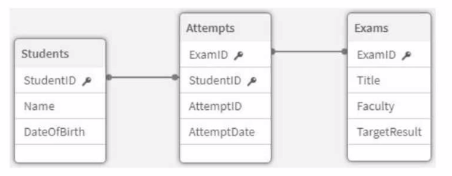In scenarios where a customer needs to standardize colors across multiple apps and be able to update them quickly, using variables in combination with an include statement is the most flexible and maintainable approach.
A . Design all base objects as master visualizations and link each object in each app to the relevant master visualization.
While master visualizations help with consistency within a single app, they don't offer an easy way to update all apps globally. You would need to manually update the colors in every master visualization in each app, which is not efficient for large-scale management.
B . Develop the first app with every variation of object and visualization and duplicate this app.
Duplicating apps will create maintenance challenges. Each app would need to be updated individually if colors or other settings change, which is not scalable for over 100 apps.
C . Create all color expressions as variables in a text file, load it in each app with an include statement, and use these variables in the color property of all objects.
This is the most efficient solution. By storing color definitions in a text file and loading them with an include statement, the business analyst can update the colors in one place, and these updates will be reflected across all apps that use the file. This method ensures easy maintenance and flexibility.
D . Store color definitions within a .qvd file and load it as a data island.
While using a .qvd file is possible, it's not as straightforward as using variables and an include statement. Data islands are typically used for selection purposes, and this method would introduce unnecessary complexity in managing colors.
Key Qlik Sense Business Analyst References:
Variables are widely used in Qlik Sense for managing repeated expressions or values like colors. They can be defined once and reused throughout the app.
Include statements allow external files (like text files containing variables) to be loaded into apps, ensuring that updates made to the text file are automatically reflected in all apps that use it. This creates a flexible and scalable solution for managing standardization across multiple apps.
Thus, the best way to maintain a standardized color palette across all apps is to create all color expressions as variables in a text file and load them into each app using an include statement.


